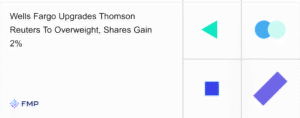- NVIDIA Corporation (NASDAQ:NVDA) is set to release its quarterly earnings with an expected EPS of $0.85 and projected revenue of $43.2 billion.
- The company faces challenges in China but is anticipated to see a 64% increase in Q1 revenues, driven by AI and datacenter expansion.
- NVIDIA’s financial metrics indicate high market expectations, with a P/E ratio of 44.12, showcasing optimism about its earnings potential.
NVIDIA Corporation (NASDAQ:NVDA) is a prominent player in the technology sector, known for its leadership in AI chip technology. As the company prepares to release its quarterly earnings on May 28, 2025, Wall Street analysts have set expectations with an estimated earnings per share (EPS) of $0.85 and projected revenue of approximately $43.2 billion.
NVIDIA faces a significant challenge with the potential loss of a substantial portion of its business in China, which previously accounted for 13% of its sales. Despite this, the company is expected to see a 64% increase in Q1 revenues compared to the previous year, driven by the growing demand for artificial intelligence and the expansion of datacenters.
Matt Bryson from Wedbush Securities has expressed confidence in NVIDIA’s performance, downplaying concerns about the impact of DeepSeek. He emphasizes the importance of Big Tech’s spending on NVIDIA, which could significantly influence the company’s results. The developments in China and overall tech spending on AI are also key factors to watch in the upcoming earnings report.
NVIDIA’s financial metrics reflect the market’s high expectations for its future growth. With a price-to-earnings (P/E) ratio of approximately 44.12, investors are optimistic about the company’s earnings potential. The price-to-sales ratio of about 24.54 and enterprise value to sales ratio of around 24.55 indicate a premium valuation, while the enterprise value to operating cash flow ratio of approximately 50 highlights the company’s strong cash flow generation.
NVIDIA maintains a strong financial position with a debt-to-equity ratio of approximately 0.13, indicating low debt levels relative to its equity. The current ratio of about 4.44 further underscores the company’s ability to cover its short-term liabilities with its short-term assets, showcasing its robust financial health.




